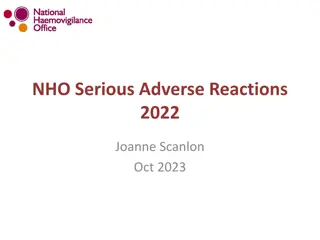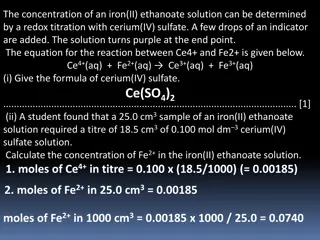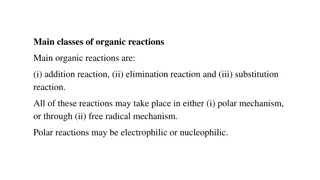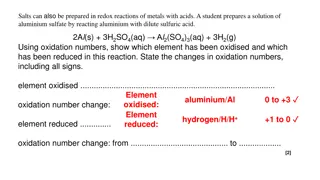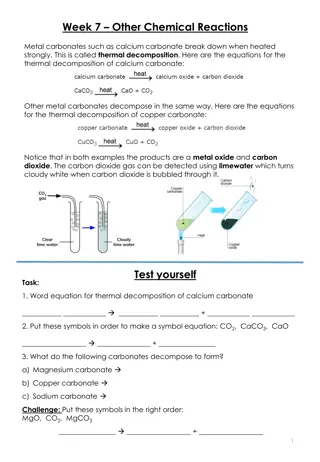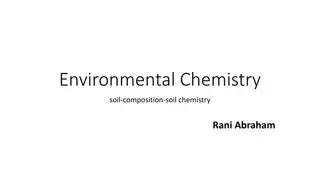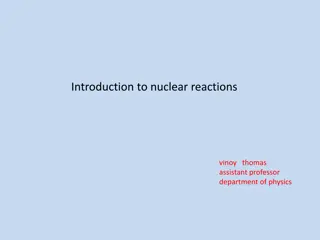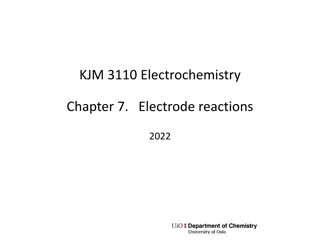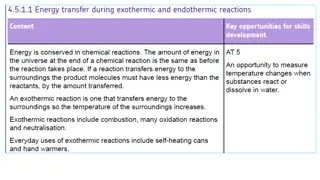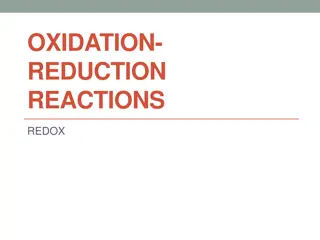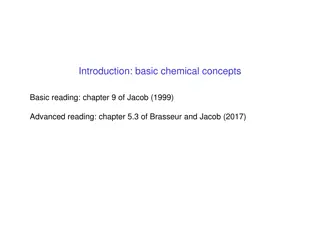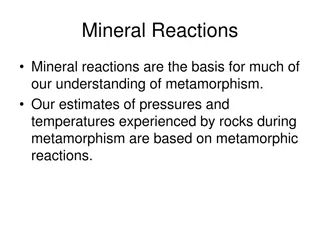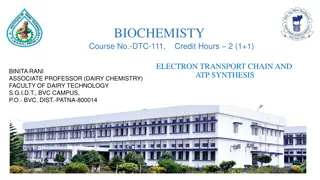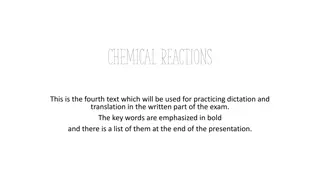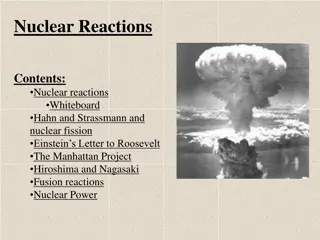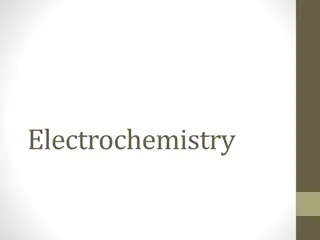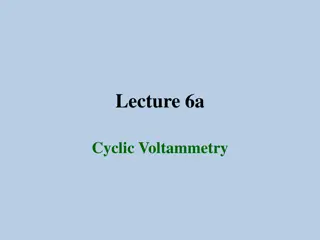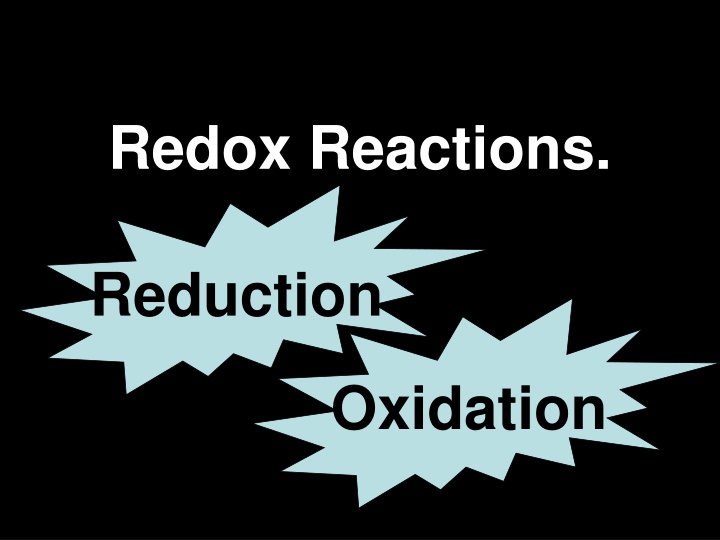
Redox Reactions and Oxidation Numbers in Chemistry
Explore the concept of redox reactions, oxidation, reduction, and oxidation numbers through informative images and explanations. Learn about key experiments and equations involving various elements and compounds. Enhance your understanding of chemical reactions in a clear and concise manner.
Download Presentation

Please find below an Image/Link to download the presentation.
The content on the website is provided AS IS for your information and personal use only. It may not be sold, licensed, or shared on other websites without obtaining consent from the author. If you encounter any issues during the download, it is possible that the publisher has removed the file from their server.
You are allowed to download the files provided on this website for personal or commercial use, subject to the condition that they are used lawfully. All files are the property of their respective owners.
The content on the website is provided AS IS for your information and personal use only. It may not be sold, licensed, or shared on other websites without obtaining consent from the author.
E N D
Presentation Transcript
Redox Reactions. Reduction Oxidation
GCSE Oxidation: Reduction: Gain of oxygen Loss of oxygen Loss of electrons Gain of electrons Increase in oxidation number Decrease in oxidation number
4 Experiments: 1. Burning magnesium 2. Copper in silver nitrate solution 3. Chlorine solution and potassium iodide solution 4. Exploding hydrogen Word equation Balanced symbol equation
Oxidised gains oxygen 2Mg(s) + O2(g) 2MgO(s) Must be a redox! Mg Mg2+ +2e- Oxidised loss of e- Put the e- in. O +2e- O2- Reduced gain of e-
Cu(NO3 )2(aq) + 2Ag(s) Cu(s) + 2AgNO3(aq) Complete the half- equations Reduced? Oxidised? Cu2+ +2e- Cu Oxidised loss of e- Ag Ag+ +e- Reduced gain of e-
H2(g) + O2(g)H2O(g) Covalent! Need a new definition. No H+ or OH-
GCSE Oxidation: Reduction: Gain of oxygen Loss of oxygen Loss of electrons Gain of electrons Increase in oxidation number Decrease in oxidation number
Oxidation Numbers The oxidation number of an atom in an element is zero. E.g. Mg in Mg, O in O2.
Oxidation Numbers The oxidation numbers of atoms in a compound add up to zero. F -1 O -2 Oxidation state of C in CO2? ? 4 = 0 H +1 Cl -1 Put the +! ? = +4
Oxidation Numbers The oxidation numbers of atoms in a compound add up to zero. F -1 O -2 Oxidation state of Mg in MgCl2? H +1 Cl -1 +2
Oxidation Numbers The oxidation numbers of atoms in a compound add up to zero. F -1 O -2 Oxidation state of N in NH3? H +1 Cl -1 -3
Oxidation Numbers The oxidation numbers of atoms in an ion add up to the charge on the ion. F -1 O -2 Oxidation state of S in SO42-? ? 8 = -2 H +1 Cl -1 ? = +6
Oxidation Numbers The oxidation numbers of atoms in an ion add up to the charge on the ion. F -1 O -2 Oxidation state of S in S2-? H +1 Cl -1 -2
Oxidation Numbers The oxidation numbers of atoms in an ion add up to the charge on the ion. F -1 O -2 Oxidation state of N in NH4+? H +1 Cl -1 -3
H2(g) + O2(g)H2O(g) Covalent! Need a new definition. No H+ or OH-
GCSE Oxidation: Reduction: Gain of oxygen Loss of oxygen Loss of electrons Gain of electrons Increase in oxidation number Decrease in oxidation number
H2(g) + O2(g)H2O(g) 0 H +1 O 0 Covalent! -2 Need a new definition. No H+ or OH-
H2(g) + O2(g)H2O(g) 0 H +1 O 0 -2 Oxidised? Reduced? O decrease in oxidation number H increase in oxidation number
Oxidation Numbers and names To avoid any confusion when an element can have several oxidation numbers, the oxidation number is usually mentioned in the compound s name. In names like elementate(X) , the number refers to element and not the associated oxygens. So if we look at some examples , we get the following names:- KMnO4 potassium manganate(VII) NaClO3 sodium chlorate(V) POCl2F phosphorus(V) oxydichlorofluoride NaH2PO3 sodium dihydrogenphosphate(III) K2Cr2O7 potassium dichromate(VI) Check the numbers.
This powerpoint was kindly donated to www.worldofteaching.com http://www.worldofteaching.com is home to over a thousand powerpoints submitted by teachers. This is a completely free site and requires no registration. Please visit and I hope it will help in your teaching.

